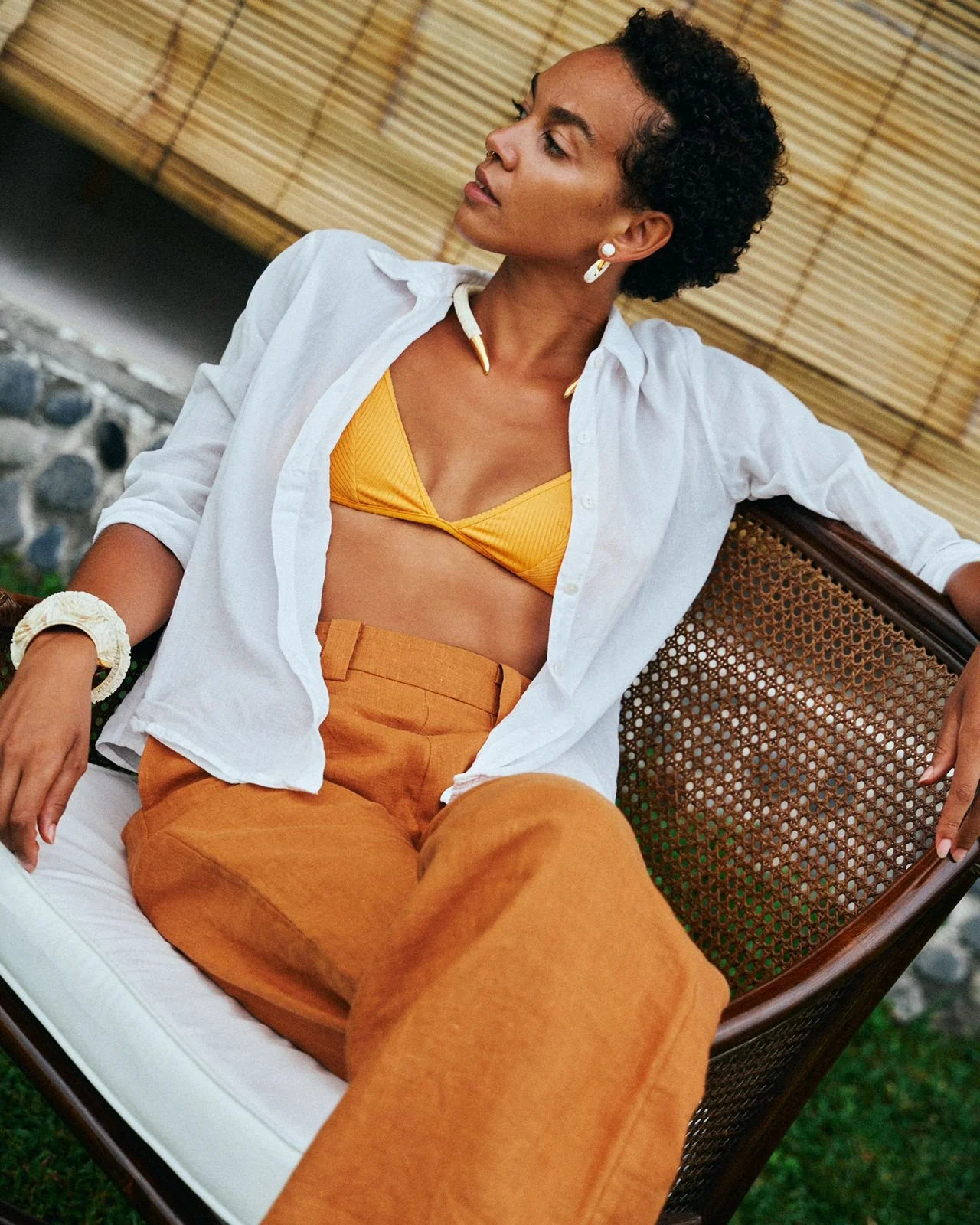Needle & Thread - HOW TO CREATE A CLOTHING LINE IN BALI
Needle & Thread
HOW TO CREATE A CLOTHING LINE IN BALI
By: Ksenia Denisova
Bali is a home for thousands of fashion and jewellery designers from all over the world. And new brands are growing like mushrooms after the rain. Let’s have a look at what’s behind this phenomenon?
1. Low cost
The average monthly salary in Bali is 3 million IDR which is around 215 USD. In Java, it is even less. And you always can find the best people and pay them way above the market average.
2. Experience
The garment industry of Indonesia started in Dutch colony times. It is one of the biggest garment hubs in Asia and the world. Both for mass market and high-end brands. So, the number of people with experience is huge. The number of people with deep experience is also growing.
3. Language and culture
Lots of people think of China when it comes to clothes. But studying China and adjusting to their mentality is way more complex than in Indonesia. In addition, Bali is one of the biggest tourist destinations, so English is pretty common. So, all these factors make it easy to start your brand here.
4. Close relations with China
Even being one of the biggest Asian garment producers, Indonesia has a lot of resources, yarns, fabrics, machinery, and accessories coming from China. Luckily, they have good relations and prompt logistics.
I asked a friend who has been in this business way longer than me: “what would you say to new designers?”.
His answer wasn’t sweet: “they must be crazy enough to start this business. And they need to be prepared to have their hands dirty.”
What can you expect as a designer from a production point of view?
Let’s say there are three levels of service you can get:
High-level well-organised factories.
Often those have international or highly experienced Indonesian management with a long history of working with an international clientele.
There you can get a turn-key solution: they will do everything from sampling to high-end packaging and diligent quality control. Some bigger factories have access to imported fabrics or have import tax exempt.
MOQs (minimum order quantity) are medium and doable for serious start-ups (can start with a few hundred pieces).
Premium quality and service come with a premium price. Be ready to pay as they are worth it.Second-tier factories.
Small or big factories that work primarily to supply the local market and look for international clients as they accumulate more experience.
Their design skills will not always impress you, but they can produce decent or even sound quality.
MOQs are still applied but already less and can be negotiated depending on various factors (factory workload, economic conditions, perspectives of future cooperation, your ability to be liked by them – no joke etc.)
Generally, there is a correlation between factory conditions (price-MOQ) and their professionalism.
None of Bali's big or small factories does production in-house 100%. They usually cut and distribute to home-based sewists (people who only sew, very few of them can cut or make a pattern). Or simply send to Java for bigger volumes.
And here we come to the next group.Private tailors/tailor groups (not talk about ateliers now who specialise in retail orders and customisations).
One thing must be noted – working with family members and close friends is an Indonesian tradition.
Here experience and skills vary from hell to sky. Depends on how lucky you are.
Just kidding… Will tell you my secret to finding a good tailor. Never ask if they can do something but ask:
“Have you done it before? Where? How long or how many times? Who or which brands have you worked with in the past?”
Previous experience is everything. Once I asked a tailor doing the best quality swimwear on the island to make a couple of t-shirts. I have never been more disappointed… and never expected that from this skilled man. But… it happened.
People do poor jobs when they don’t know how to do them. OR… When they don’t want to do it (and cannot say No). In any case, there is no sense in continuing… So, this man is still doing my swimwear, and we are both good with that.
About Xenia
My past has nothing to do with clothes production. I studied rocket science engineering and worked in an international business consulting firm. By 30, I was fed up with that corporate life, and went looking for other fields of self-realisation.
In 2017 when my son was born, I started to sew him some simple clothes. The local market had nothing natural to offer for kids.
Slowly-slowly, after many mistakes made and lots of money lost, the first small collection of @bali.bebe was born. With this first project, I learnt that doing it all alone is way too much, and it would be good to have a partner.
Half a year ago, I launched a second brand @besse_thelabel with a close friend. It was so much fun to work together with a partner (even the best ones; paid service providers do not give you the same experience).
And something was happening in between.
In March 2020 I did a few events to share the knowledge and mistakes I experienced that later transformed into the Bali Fashion Designers FB community. More than one thousand people are now actively supporting each other on their journey. And well moderated – old patterns of competition and greed for resources and information are surely kicked out.
Come join our events to meet new friends and avoid costly mistakes starting up in fashion. In this business, you learn only by doing – you pay and learn.
If I didn’t cool down your dreams through this article, then you are ready! As Elon Musk said, "Persistence is very important. You should not give up unless you are forced to give up."



